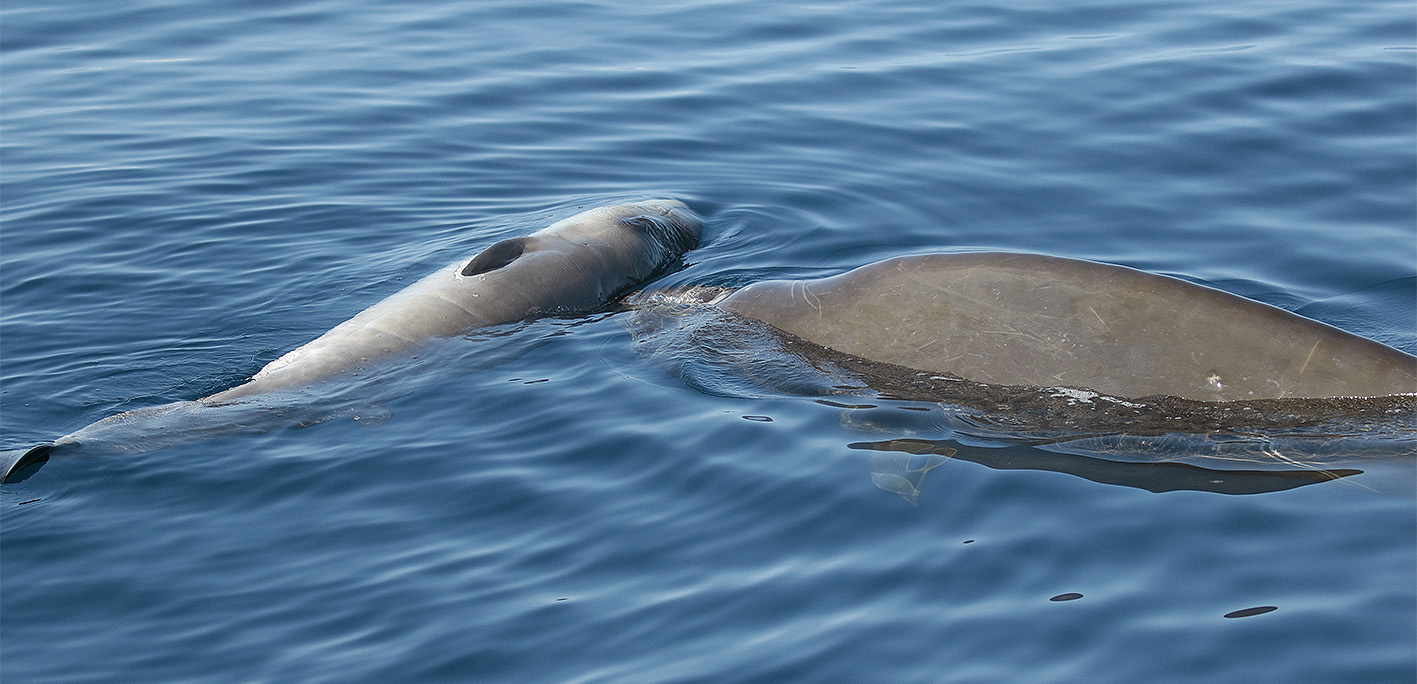Grief has been observed in the animal kingdom in all manner of different species from primates that walk on land to the mammals that swim in the planet’s oceans. Now, for the first time, grief and nurturant behaviors have been observed in the Cuvier’s beaked whale, one of the most elusive whale species on Earth.
Observed in the Bay of Biscay off the coast of Spain, two Curvier’s beaked whales were spotted from a tour boat. On closer inspection, it was revealed to be an adult female and calf pair. The calf was observed to be floating dead on the surface of the water while the female stayed close to the carcass. The same pair had also been spotted the previous day.
The female was seen to have a severely emaciated body condition and video data revealed the dead calf to be a male, thought to have died only 48 hours before this sighting. The female was seen swimming in rings around the corpse and, through drone footage, was observed swimming under the body of the calf and moving it above the surface of the water. This type of behavior is known as display carrying and has been observed in other whale species.

A female Cuvier’s beaked whale nudges a dead male calf.
Image courtesy of Gorka Ocio/verballenas.com
An alternative explanation suggests that the mother was encouraging the calf to breathe, not believing the calf to have died. “We know that in other cetacean species, mothers lift their newborn calves with their bodies to help them take their first breath,” Gorka Ocio, a tour boat guide, told New Scientist.
The authors suggest that this behavior could come at a huge energetic cost to the mother since she was not observed feeding during that time. Typically, Cuvier’s beaked whales do not spend long periods of time on the surface of the water, instead making prolonged deep foraging dives that regularly exceed 1,000 meters (3,280 feet) in depth and can last as long as 2 hours.
Time on the surface also increases the risk of predation of the whales by killer whales or sharks. Cuvier’s beaked whales are known to exhibit lots of anti-predatory behaviors to avoid killer whales, such as diving in groups and having silent non-foraging dives.
Cuvier’s beaked whales have an extensive range across the world’s oceans and typically range from 4.5 to 7 meters (15 to 23 feet) long. Newborn Cuvier’s are well developed with a large body size, which may also allow them to accompany the adults on deep foraging dives from a young age as an anti-predator strategy.
The paper is published in Marine Mammal Science.
Source Link: First Observation Of Grief Behavior Seen In Cuvier’s Beaked Whale Mother